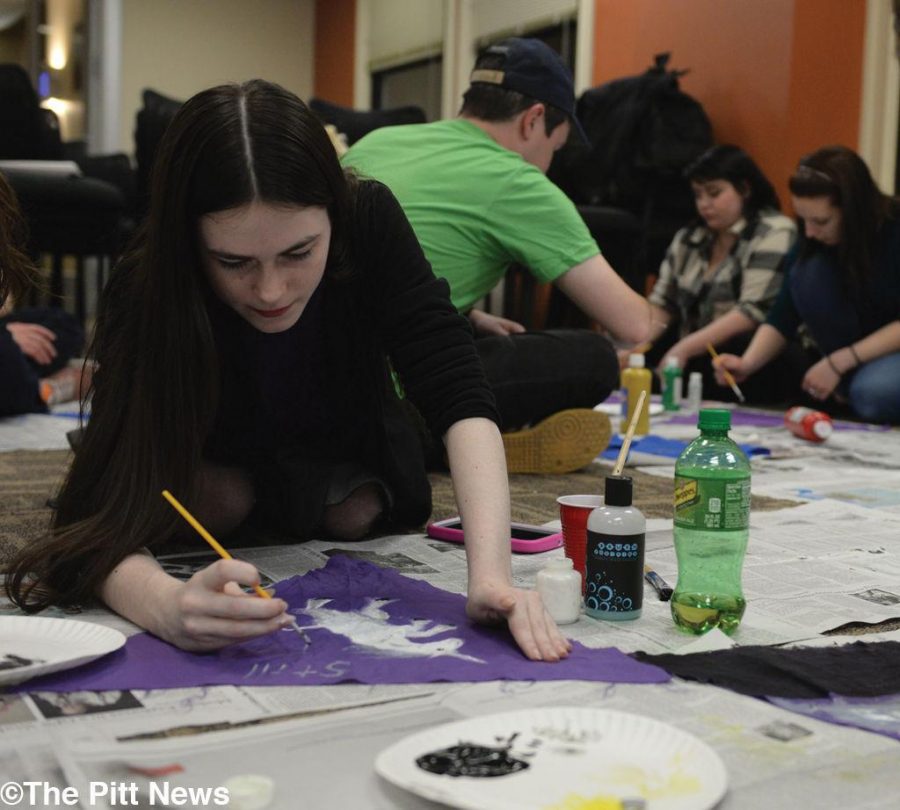Rainbow remembers Holocaust’s impact on LGBT+ community
April 1, 2015
Kate Shindle’s triangle flag emphasized the importance of individual identity.
Shindle crouched over the slice of fabric and painted the words, “All parts of you deserve respect.”
Shindle, an undeclared freshman, was one of about 25 people who gathered in the William Pitt Union on Tuesday night to paint multi-colored triangular flags as part of Pitt Rainbow Alliance’s “Triangle Project.”
The annual artistic endeavor is an effort to reclaim the triangular symbol that gay men were required to wear during the Holocaust. Students painted slogans and symbols on their flags to commemorate the tragic period and outwardly express their individual identities.
Erin Cullen, business manager for the Rainbow Alliance, began the night with a brief history of the pink triangle that homosexual men were forced to wear under Paragraph 175 of the German criminal code during the Third Reich.
Men who were homosexual and Jewish in Nazi Germany were required to wear pink and yellow triangles, overlapping each other. Cullen held one in her hand that read, “Dedicated to the victims of §175,” referring to Paragraph 175.
Cullen hoped the flags, which will hang in the Conney M. Kimbo Gallery in the Union on Wednesday, will “help people see the diversity in the Pitt community,” she said.
Michael O’Brien, vice president of the Rainbow Alliance, hoped each flag would represent how its creator feels in society.
O’Brien said Pitt’s community has become better at accepting lesbian and gay students.
“It’s just about making sure we stay cognizant of the more erased identities,” O’Brien said, referring to anyone who might identify as other than gay or lesbian.
Rainbow Alliance President Allie McCarthy has participated in the Triangle Project for three years, and in the past made humorous flags with phrases like, “Yay! Gay!”
This year, she wanted to express the sincerity of the event and hoped that students without background knowledge about queer identities would understand references.
“A lot of [the flags] are abstract. I know what that one means, but some people might not get it,” McCarthy said, referring to a purple flag with the words, “NOT BROKEN” painted in white. She said the phrase is meant to refute the idea that asexual people are “broken.”
At the end of the night, students stood laughing and talking together as their flags dried in the corner of the room, making it known that Pitt’s campus is a flag woven with a multitude of colors.
Cullen’s completed flag consisted of symbols that she felt define who she is, all surrounding the words, “I exist.”








